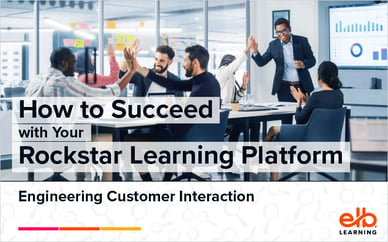Under the unpredictable learning and development (L&D) landscape, the demand for training has increased. However, for employees to adopt the flexibility and agility needed to successfully navigate this changing landscape, they need the right training. This doesn’t mean offering training after training, but rather, changing the way employees are trained.
This is where an agile learning method is used.
What is Agile Learning?
Agile methodology refers to the process of completing projects using short work cycles where scope and requirements unfold as the project continues. Changes are expected and are driven by a continuous feedback loop.
Agile learning adopts this methodology with employee training. It’s essentially any type of training that uses agile values to improve communication, flexibility, or collaboration.
Benefits of Agile Learning
Ninety-eight percent of companies who adopt an agile learning methodology have benefited from it. Whether it’s responding more quickly to customer needs or supporting rapid development, the advantages that come from agile learning are extensive. Some include:
- Microlearning: Like the agile methodology, microlearning enables employees to learn in quick, short bursts. Most content is broken down into small, digestible chunks that are easily absorbed.
- Accessibility: Agile learning enables employees to learn at any time, anywhere, and from any device, which supports an environment of continuous learning both in and out of the office.
- Adaptability: An agile learning model ensures employees are ready for the rapid changes experienced in many industries by helping them learn additional skills and concepts. Moreover, it encourages employees to be open minded and curious.
- Promotes Communication: Ensuring employees thoroughly understand subject matter is critical. Because agile learning promotes communication and collaboration, employees and trainees frequently have the chance to ask questions or send feedback, improving overall training and efficiency. Ultimately, this decreases frustration and stress and leads to better outcomes.
- Increased Customer Focus: By focusing on the customer’s vision and end goals, customer focus is increased; this ultimately leads to improved customer satisfaction and retention.
Essentially, an agile learning process is like learning to dance with a partner or play on a sports team. This method enables both customers and companies to work more efficiently together. Being carefully trained on a client’s unique needs, employees are able to quickly fulfill them with little need for negotiating or checking in.
Implementing an Agile Learning Design and Delivery Process
To create an agile learning design, three things are needed:
- First, the right product. Agile learning methods have the flexibility needed to ensure companies are pushing towards and creating the right product for clients.
- Second, the right design. With multiple iterations built into the process, clients are able to provide multiple rounds of feedback around a product’s design to ensure it’s what they want.
- Finally, the right mindset. It’s crucial that employees be continuously motivated to learn and pursue new skills. An interactive design and development process supports this.
Once these needs have been met, L&D teams must next focus on selecting the right agile learning technology, one that supports rapid development, keeps pace with rapid business changes, and allows information to flow freely between authors and learners. Providing users with the right technology democratizes content creation and turns employees into knowledge-flow orchestrators.
To learn more about selecting the right agile learning technology, download the eBook “Orchestrating an Agile Learning and Delivery Process” from eLearning Brothers.








